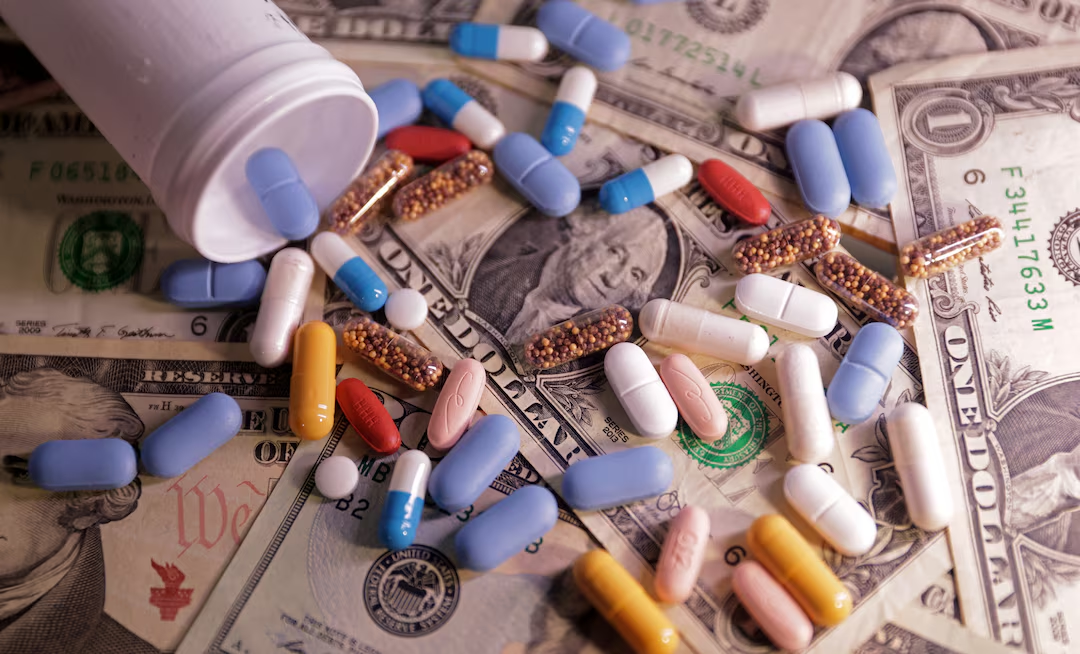Amid the ongoing discourse on American self-reliance and economic resilience, President Trump has voiced a strong desire to reshore pharmaceutical manufacturing to the United States – an initiative resonating with his administration’s broader aim of bolstering national industry and reducing dependency on foreign production chains. However, this strategy, while appealing in its patriotism, is freighted with economic complexities, including potential repercussions underscored by experts such as pricier drugs and possible shortages, particularly within the generic drug market.
### Economic Underpinnings and Strategic Intentions
The global pharmaceutical market has been characterized by its transnational supply chains, with countries like China and India playing pivotal roles in the production of active pharmaceutical ingredients (APIs) and the manufacturing of generic drugs, respectively. This international division of labor has allowed the U.S. to benefit from lower manufacturing costs abroad, thereby keeping drug prices relatively manageable under normal economic conditions.
President Trump’s proposition to incentivize or possibly mandate the return of drug manufacturing to domestic soil is aligned with his “America First” economic doctrine. The envisioned revamp primarily aims to mitigate the vulnerabilities exposed by the COVID-19 pandemic – where disruptions in the global supply chain impacted the availability of essential medical supplies and shed light on the precarious nature of heavy offshore reliance.
### Anticipated Challenges and Expert Warnings
However, experts in pharmaceutical economics and supply chain management warn that such a drastic shift could disrupt the finely tuned equilibria of drug production and availability. Implementing tariffs on imported pharmaceuticals, as suggested in some circles within the administration, could inadvertently hike up the costs. This is because the infrastructure, labor, and regulatory costs in the U.S. are typically higher than in countries currently leading in drug manufacturing.
Furthermore, the specialization in generic drug production seen in countries like India – where economies of scale have been achieved through decades of focused industry development – suggests that replicating such a system domestically would require substantial time, investment, and possibly sustained government subsidies. Without such measures, the U.S. might see a significant uptick in generic drug prices, a scenario that could place immense financial strain on health systems and patients, particularly those uninsured or underinsured.
### Potential Shortages and Transition Woes
The transition to domestic pharmaceutical manufacturing, if not strategically phased, risks triggering shortages in the short term. Production facilities in the U.S. would need to be built or repurposed to meet FDA standards, a process that necessitates considerable time and capital. There’s also the challenge of scaling up production to meet national demand rapidly – a task complicated by potential workforce training requirements and regulatory approvals.
These factors combined raise the specter of an interim period where the availability of essential generic drugs could be compromised, potentially leading to public health ramifications.
### Balancing Act: Protectionism vs. Global Efficiency
While the intention behind bringing pharmaceutical manufacturing back to the U.S. is founded on boosting economic security and job creation, it juxtaposes against the principles of global economic efficiency and comparative advantage. The current international pharmaceutical framework has, over decades, been optimized to reduce costs and enhance distribution efficacy. Dismantling such a system might satisfy political objectives but could lead, at least in the short term, to less economic and health security rather than more.
### The Road Ahead
For the Trump administration’s policy to succeed without triggering the outlined adverse impacts, a meticulously structured plan is necessary, potentially involving phased tariffs targeted to gradually incentivize domestic production shifts, coupled with significant investment in infrastructure and workforce development. Transparent and thoughtful dialogue with industry stakeholders and international trade partners will be pivotal to counterbalance the economic nationalism driving the policy with the global realities of pharmaceutical economics.
This approach will require nuanced policymaking, patient capital, and a readiness to navigate the complex interdependencies that define global health and economics. Whether such a strategic recalibration can be achieved without inducing the feared shortages and price hikes remains a critical question for the current administration and policymakers.










